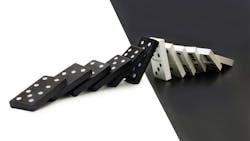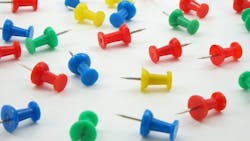Vorster: How Equipment Costing Differs from Job Costing
Knowing costs is the price of admission to the construction industry. We simply cannot survive if we do not know, or are not able to estimate, the cost of the work and the cost of the resources used.
Job costing—to determine the cost of completing a particular item of work—and equipment costing—to determine the cost of owning and operating a particular machine—are similar in that both measure performance by comparing an earned value budget with the estimated cost of the work performed. They are, however, different when it comes to two important factors.
Let’s set up a simple framework to understand how job costing and equipment costing work and then discuss the critical differences.
The framework shown in the nearby diagram emphasizes the fact that, in the end, costing is about comparing an earned value budget with the estimated cost of the work performed. Let’s see how the process works by using a small asphalt crew as an example.
First, from a job-costing point of view, the crew generates its earned value budget by doing work. Each unit of work has a budgeted or target unit value, and it is relatively simple to measure and record the number of units produced in a given period. If the budget for the paving operation is $8 per square yard and if the crew has satisfactorily completed 5,000 square yards of paving in the day, then it has generated an earned value budget of $40,000 for the day.
The crew generates cost by using resources. We know the quantity of each resource used, and each resource—usually classified as either labor, materials, and equipment—has a unit cost. The cost of labor is easy. Carefully managed timecards provide the hours worked and the payroll system knows the hourly rate for each person on the crew. Materials costs are also easy. We carefully record each delivery, and the accounts payable system knows what we pay the asphalt supplier for each ton of asphalt delivered to the site.
We use and measure labor and materials on a daily basis, and the company pays for them with good hard cash on a weekly or monthly basis. Payroll and accounts payable look after the transactions—there should be no problems.
Equipment is the tricky part. Recording equipment hours used is frequently fraught with difficulty. Who records them, how do they are record them, and how are they verified have traditionally been difficult questions. Telematics is certainly helping, but accuracy and consistency remain a problem. Who checks and ensures that the roller is paid the right number of hours for the work it has done?
The unit cost, or cost per hour, of the company-owned equipment used by the crew on a particular day is impossible to determine. We may know how much fuel was burned on a given day, but who knows how much wear and tear the machine experienced or whether it may be a few hours away from a catastrophic engine failure. The job-costing system “solves” the problem by using a standard unit cost—or the hourly rate—to represent the expected average hourly cost for a given class and category of machine. We think, and our job-costing system assumes, that pavers cost an average of $200 per hour.
The rate used for company-owned equipment represents or evens out all the costs we expect to experience over an extended period. It is a tricky high-risk number based on two big unknowns: (i) an assumed ownership period that may or may not come to fruition and (ii) numerous repair and maintenance costs that may or may not occur at any point during the assumed ownership period.
Most equipment expenditure occurs in spurts at random points in time.
With job costing, the earned value budget is generated, and the corresponding costs are incurred, as the work is performed. “Earning” and “spending” travel together and occur in a relatively uniform manner. Equipment costing is almost exactly the opposite. The days on which they “earn” the most are likely to be the days on which we “spend” the least on repair parts and labor. We will “earn” a lot for several days, weeks, or months, but then, we will have to stop and “spend” on maintenance, repair, or rebuild work needed to make good on past wear and tear.
The time lag between cause and effect
If something goes wrong in job costing, we will see the results almost right away. If the crew does not produce the required productivity because asphalt deliveries were held up at the plant, we will be able to act right away. If an engine fails prematurely, root cause analysis may establish cause and effect but in most cases, there will be a time lag. An engine failure may be due to water in a load of fuel that was delivered several months ago, for example.
Spurts and latency cause equipment costing to be much more difficult than job costing. It requires a better understanding of long-term trends, data, probability, and statistics. And yet, many companies invest more in determining what it costs to lay a square yard of asphalt than they do in trying to understand the cost of the paver that does the work. It is time that the art of equipment costing was recognized as a challenging and complex science. Successful companies are investing in the subject, and all are reaping substantial rewards.


